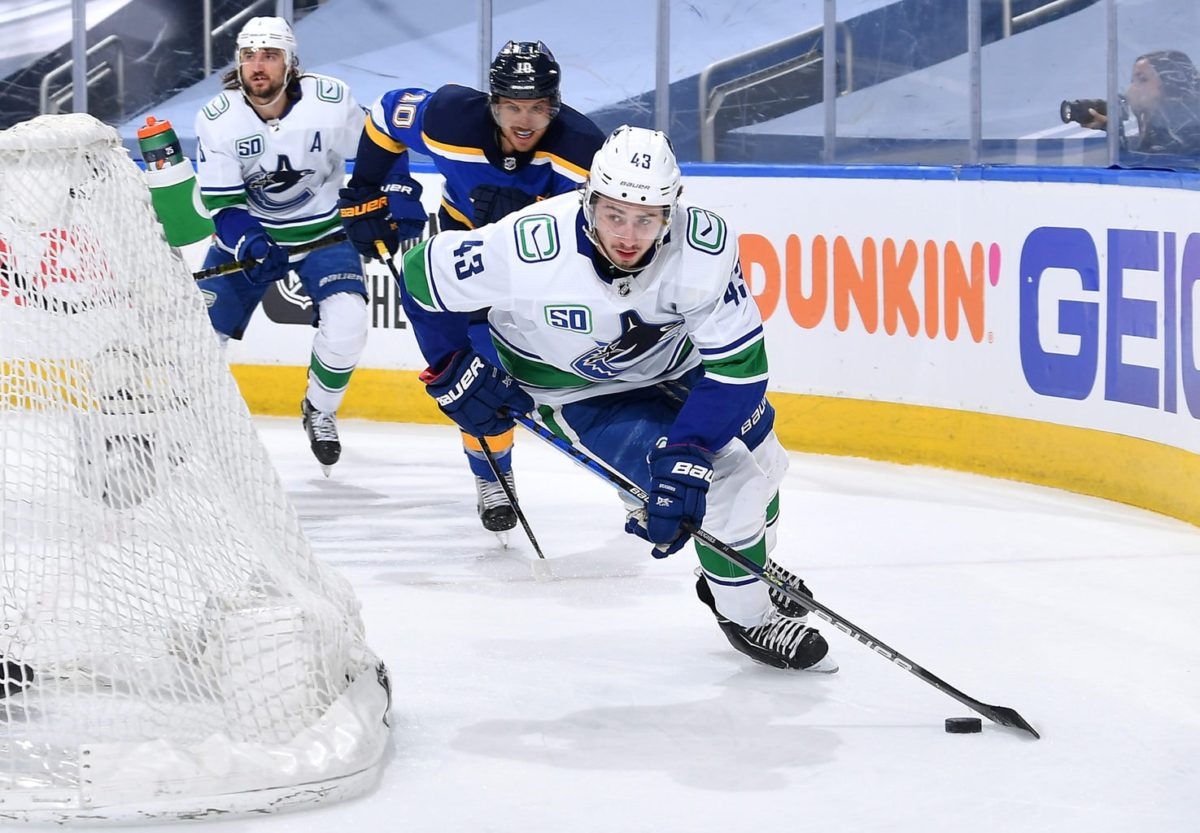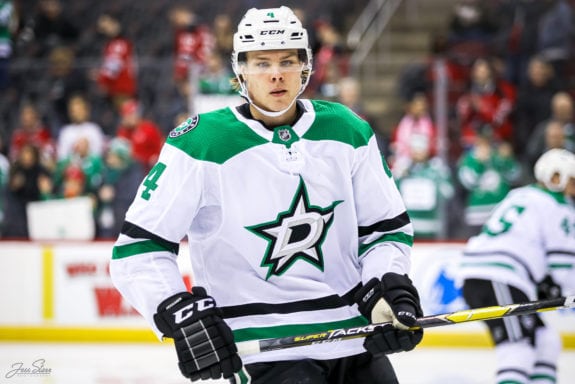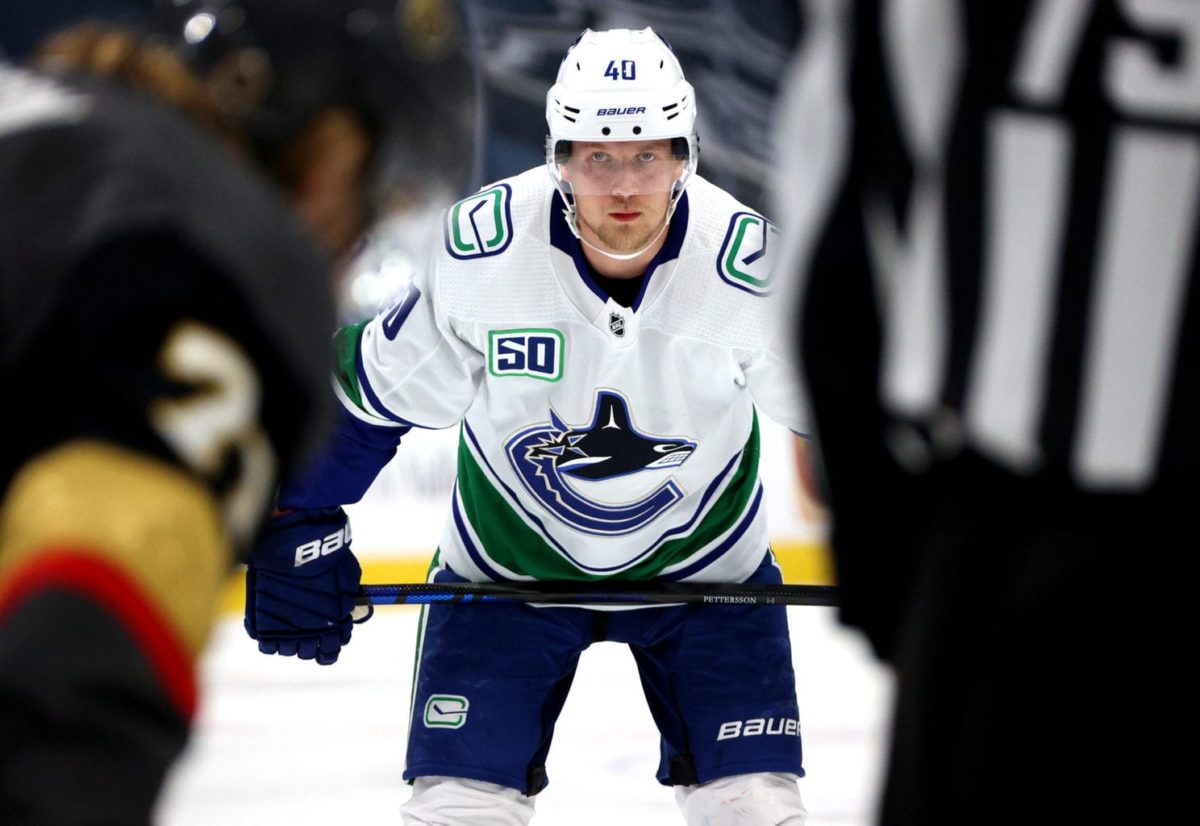The Vancouver Canucks and their general manager Jim Benning have had an eventful offseason after a disappointing 2020-21 season. The club traded for Jason Dickinson from the Dallas Stars for a 2021 third-round pick, added Oliver Ekman-Larsson and Conor Garland while moving the 2021 ninth overall pick, Loui Eriksson, Jay Beagle, Antoine Roussel, along with two other draft picks. Additionally, the team bought out Braden Holtby and Jake Virtanen. Benning also added a few more depth pieces.

Despite improving the roster for next season, the club still has two key restricted free agents to sign, in Elias Pettersson and Quinn Hughes. Although Olli Juolevi and Dickinson are also RFAs, Pettersson and Hughes are cornerstone pieces for the Canucks. As The Athletic’s Thomas Drance notes, only one of the two players can sign a long-term extension, while the other player will have to sign a bridge deal in order for the club to bring back both players and sign Dickinson (from ‘Drance: Do Canucks have cap space to sign Elias Pettersson, Quinn Hughes long term? Canucks offseason mailbag,’ The Athletic, Aug 4, 2021).
Although the Canucks still have to re-sign Pettersson, Hughes’ contract negotiations seem to be a little more complicated. Throughout the NHL, multiple defencemen have signed extensions, which include high cap hits. Therefore, if the Canucks do sign Hughes in a long-term deal, he will get a big pay raise.
Recent Defenceman Signings
This offseason, a few defencemen received high-paying contracts. Two players who make very fair comparisons to Hughes and players who received extensions include Miro Heiskanen and Cale Makar. The Stars gave Heiskanen an eight-year contract extension worth $67.6 million with an annual average value (AAV) of $8.450 million mid-way through July. Meanwhile, the Colorado Avalanche re-sign Makar to a six-year $54 million contract with an AAV of $9 million. Both contracts showed Hughes’ next contract could come with a cap hit of $8.5 million to $9 million.

Contract comparisons for Hughes have become complicated after Seth Jones, Zack Werenksi, Dougie Hamilton, and Darnell Nurse signed their contracts. Jones was traded by the Columbus Blue Jackets to the Chicago Blackhawks and signed an eight-year, $76 million contract extension with an AAV of $9.5 million. Werenski signed a six-year, $57.5 million contract extension with the Blue Jackets, with an AAV of $9.58 million. Also, Hamilton signed a $63 million contract with the New Jersey Devils, with an AAV of $9 million. Lastly, the Edmonton Oilers extended defenceman Darnell Nurse to an eight-year contract with an AAV of $9.25 million.
With four defencemen receiving new contracts with an AAV of above $9 million, it is fair for Hughes to ask for a long-term contract with the same cap hit. Similar to all four defencemen, he is the top defenceman on his club, and a contract with an AAV well above $9 million for Hughes makes sense. The only problem is, the Canucks likely won’t be able to make that happen right now.
Hughes Contract Negotiations Could Last Until Training Camp
Drance and Rick Dhaliwal recently noted Hughes’ contract negotiations are a lot more complicated than Pettersson’s. Along with the other defenceman signing contracts with high cap hits, something that complicates Hughes’ contract is his 10.2(c) status, which means, unlike Pettersson, he can not receive an offer sheet (from ‘What we’re hearing about the rest of the Canucks offseason, Danila Klimovich, Vasili Podkolzin and RFA negotiations,’ The Athletic, July 27, 2021).

When other players at a similar level as Hughes have had 10.2 (c) status, their second contract negotiations usually don’t end until training camp. This was the case for Johnny Gaudreau, Torey Krug, Jaden Schwartz and his teammate Brock Boeser. Three of those contracts led to the players signing short-term bridge deals, while Gaudreau is the only player who signed a six-year deal with the Calgary Flames. Therefore, it wouldn’t be a surprise if Hughes’ contract negotiations don’t end until training camp and if he signs a bridge deal as well. Schwartz was rewarded with a five-year, $26.750 million contract extension, while Krug received a four-year $5.250 million extension.
Hughes Should Sign Bridge Deal
Since only one of the two cornerstone players can receive a long-term deal, Hughes should sign a bridge deal. Since Pettersson’s deal is likely to get done a lot earlier than his teammates, he should secure a long-term contract with the club. The Canucks would be able to keep most of their core together and later reward Hughes with a big contract since the pay for defenceman is starting to rise. The 2018 first-round pick can take a look at how Nurse has been rewarded after signing multiple bridge deals with the Oilers. Another scenario would be signing both players to a bridge deal and cashing in on big contracts down the road. Regardless of what Benning decides to do in terms of contract length and the cap hit of each player, the Canucks need to lock both of their star players up at some point.
